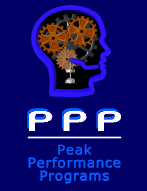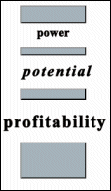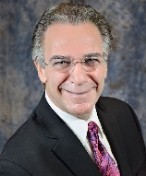Mark Hillman, Ph.D.
Executive Consultant
One on One Executive Coaching
The rapid growth of executive coaching reflects its bottom-line benefits - increased profits and reduced costs, achieved within a defined timeframe. To be effective, executive coaching must be both strategic and individualized.
Executive coaching that is strategic, that focuses on business needs as well as individual needs and goals, is the key to achieving business results.
Where executive coaching becomes strategic is in the preparation that precedes the actual coaching process. This involves addressing a number of critical questions:
- What are the key business challenges facing your practice today? In the next two to five years?
- What business goals are you trying to achieve?
- What core values best define a common framework for how business results are achieved in your organization?
- Given these challenges, goals, and values, what leadership skills, knowledge, and abilities have been critical for success in your organization in the past?
- How relevant do you think they are for success in the New Economy?
- Does your organization have proven methods to attract, develop, and retain required talent?
Once the strategic context has been mapped out, the executive coaching process can begin. This is the personal component of the coaching process, where the client's own particular strengths and development needs are benchmarked against the leadership attributes needed to achieve the strategic goals of the business.
Careful Contracting
It takes skill to create a trusting environment in which open dialogue can occur and underlying issues can be brought to light. A great deal of honest communication and feedback will set the parameters of the coaching process.
A contracting meeting for the purpose of defining expectations should take place before the individual coaching begins. The objectives of the "contracting dialogue" should include:
- Identification of success factors
- Agreement on confidentiality boundaries
- Identification of specific expected business results
- Confirmation that the "chemistry" is right to build trust and rapport
- Definition of clear roles and responsibilities
- Clarification of milestones and timelines
- Agreement on financial terms
Addressing these and other questions will help to define the individual expectations and support the business objectives.
Comprehensive Assessment
The second step in the executive coaching process is the assessment of the individual. Through interviews and formal assessment tools, gaps between current and expected performance are identified to measure how the coaching client stacks up against the business context, expected leadership attributes, and expected business results.
The assessment is done by face-to-face interviews with key stakeholders. The main advantage of the face-to-face approach is that it enables the coach to probe, and thus provide feedback that is both quantitative and qualitative.
The ultimate value of the assessment process is that the results clearly illustrate areas of strength as well as those requiring attention. This paints a clear picture for the executive in terms of strengths and development opportunities, and thus focuses and informs the process.
The face-to-face interview method has been described as "a 360-degree survey that comes to life - a much deeper and more meaningful picture than a written 360-degree report."
Feedback and Action Planning
The first order of business in an effective feedback session is to revisit the agreed-upon objectives and to review the ground rules. Sessions should occur outside the normal office environment to ensure a more relaxed experience and free of interruptions.
During the feedback dialogue session, the coach will continue to refer to the business requirements, leader attributes, and expected business results, and compare them to current performance. The aim is to work within a framework that directs feedback toward the key objectives of the business.
The action plan must focus on behaviors that contribute to specific business outcomes.
Once the action plan is complete, key stakeholders will be invited to endorse it. By sharing the action plan with those who were initially interviewed, the executive can be assured that the planned improvements are consistent with expectations.
The other benefit of closed-loop validation is that it involves those most likely to be influenced by the change in the executive's behavior. As a result, this process fosters their commitment to help the individual develop.
Active Learning
This step is supported by monthly telephone consultations involving the coach and the client. These dialogues help to ensure that the milestones are being met and the action plans are being followed, and that the coaching process continues to be focused on the individual's business needs.
Reviewing and Sustaining Success
Once a quarter, after the initial session, face-to-face consultations will be conducted to determine the impact of the process on the individual's business growth.
Research shows that follow-up is a critical factor in the success of the entire coaching process.
The Ultimate Value of Coaching
The prime objective of an executive coaching program is always to improve business results. This is achieved by increasing profits or cutting costs. The business of executive coaching is neither simply intuitive nor merely the application of a mechanized process. It must, at all times, be rooted in the business strategies of the individual client, justifying itself by delivering real and tangible business results.
Structured Implementation with Cost Analysis
MONTH I - FACE TO FACE
I will fly in the night before and we will have a meet-and-greet dinner with you and any significant stakeholders in your practice.
The following morning we will start the Executive Coaching session at 8:00AM and work till I need to depart for my flight home.
COST ANALYSIS
$2,500.00 Consultation Fee, plus transportation, lodging, food and parking.
Prior to our scheduled meeting, we will discuss flight schedules and you will e-mail me an e-ticket.
MONTHS II & III - TELEPHONE CONSULTATIONS
You will have access to up to three hours of telephone consultations by calling me on my number (518-496-0720).
COST ANALYSIS
No cost.
MONTH IV - FACE TO FACE
See Month I
MONTHS V & VI - TELEPHONE CONSULTATIONS
Three hours - no cost.
MONTH VII - FACE TO FACE
See Month I
MONTH VIII & IX - TELEPHONE CONSULTATIONS
Three hours - no cost.
MONTH X - FACE TO FACE
See Month I
MONTHS XI & XII - TELEPHONE CONSULTATIONS
Three hours - no cost.


